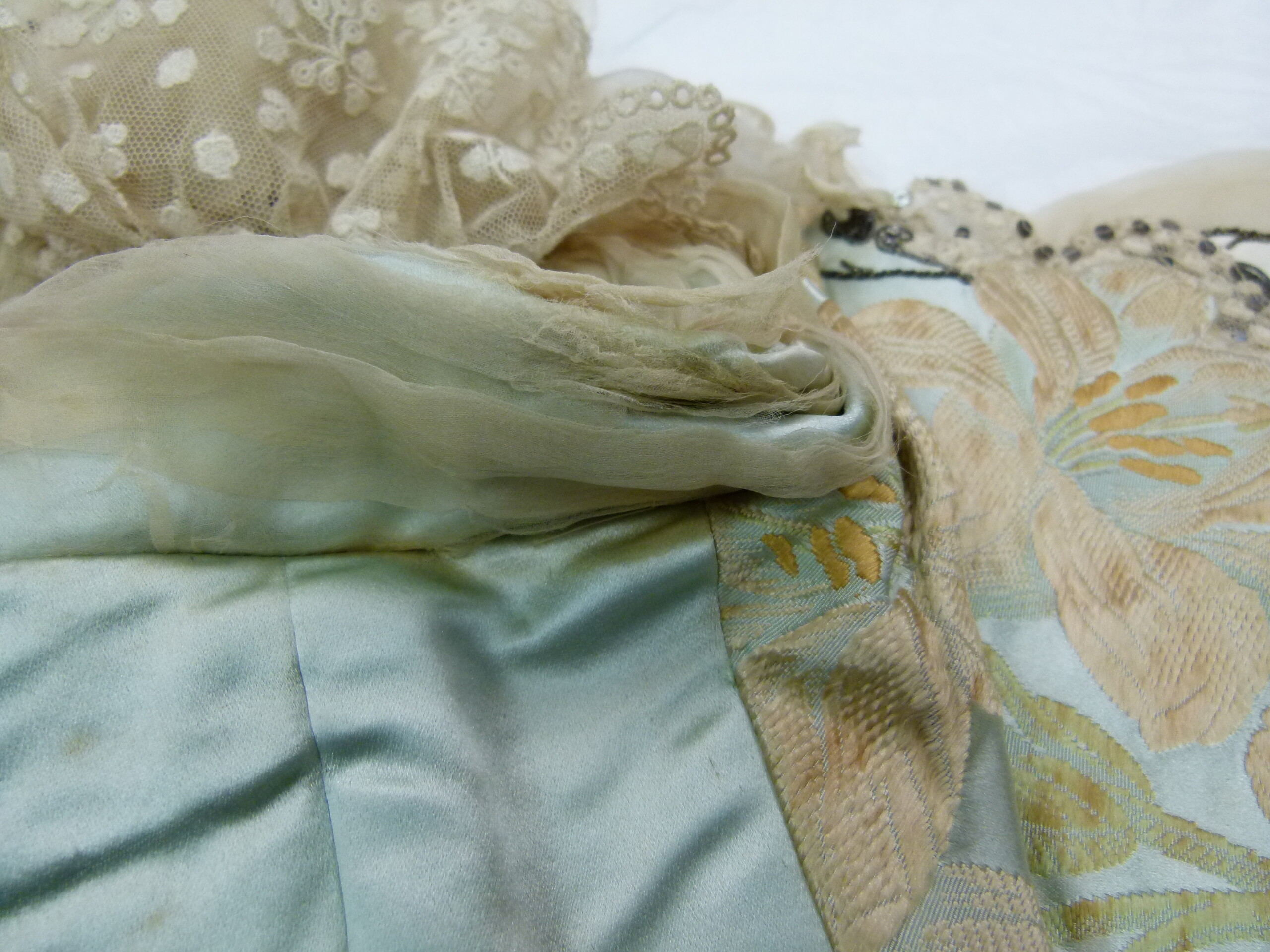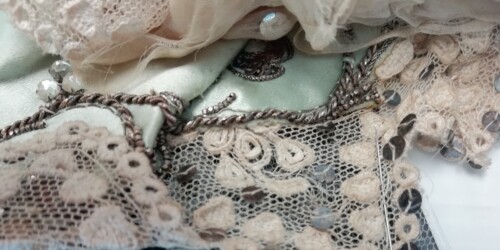
Conservation of a Pale Green House of Worth Ballgown (Part 2)
Having focused mainly on the skirt conservation in my previous Conservation Story about this gown, I would like to turn now to the bodice. While similarly dishevelled in state to the skirt, its return to splendour posed a completely different set of conservation conundrums. The silk had split along the bodice boning with the stitching itself creating a line of perforation where the fabric was pulled taught to winch in the waist. This is not uncommon with historic costume as fragile silks often split along lines of weakness under the weight of a garment or strain of use.
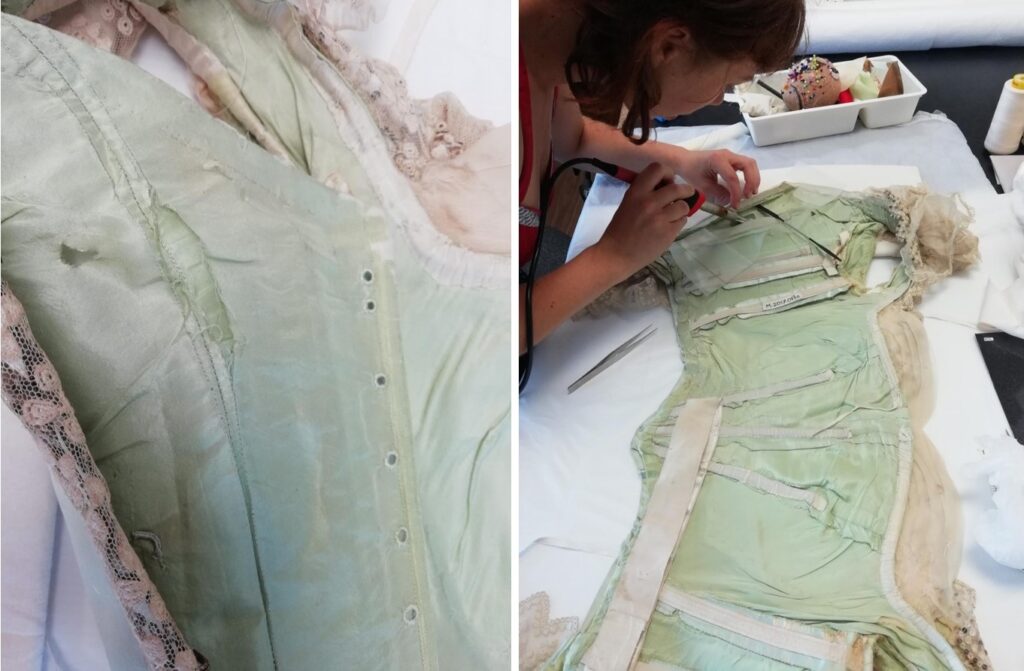
Left: splitting bodice before conservation, right: adhesive support application in progress
A silk crepeline adhesive support was applied to the inside of the damaged bodice panel to bridge splits in the bodice, reinforced with stitching from the outside (as for the skirt). I did, however, remain concerned that the bodice continued to be quite weak and had to fit snuggly onto a mannequin to create the required wasp waist. With this in mind, we decided to add an additional lining, fractionally smaller than the original. A pattern was taken from the original and made up in Fuji silk, this was then stitched along the strongest lines of boning to the underarms. The concept being that the additional lining would take the strain of mounting but could be easily removed after exhibition to allow access to the lining for study. Hooks and eyes were sewn into this additional lining to fasten it, in situ, during mounting, to ensure an exact fit.
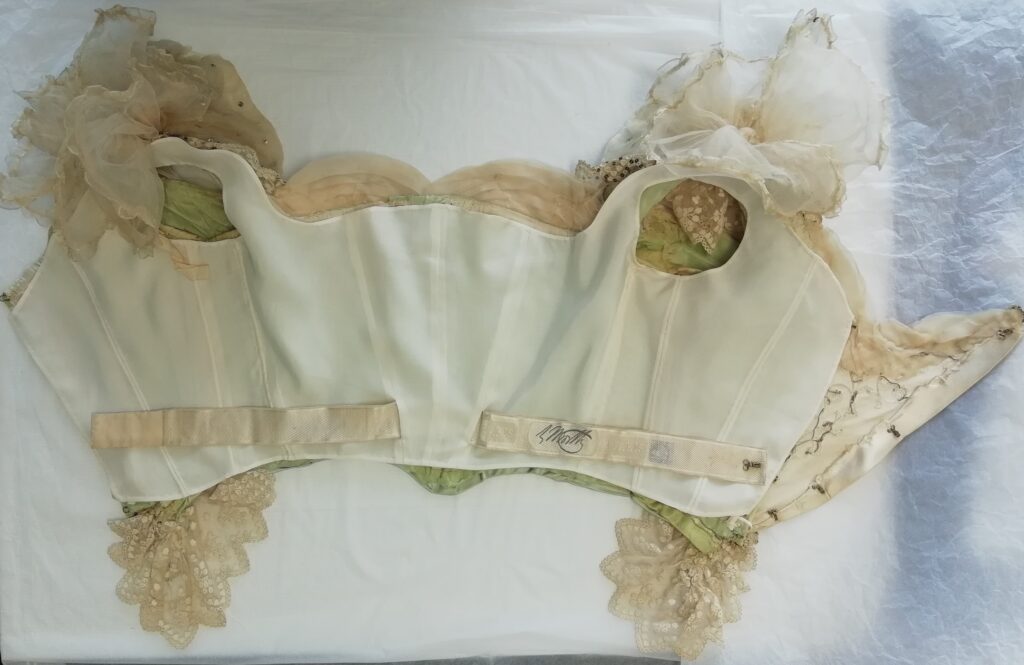
Additional silk fuji lining minimally stitched to bodice boning to take the strain off the bodice seams
Having already replaced the shredded front skirt panel I was reluctant to repeat this level of intervention on the bodice for fear of ‘over restoring’ at the expense of original material. I decided to humidify what was left of the shoulder ruffles to reintroduce some of their original shape and then apply each ‘petal’ onto dyed crepeline. While this was not a full, couched support the new crepeline had the dual purpose of adding volume and visually infilling the loss to the rather sad looking, crumpled original silk, as well as offering some support for the damage.

Left to right: PL shoulder before conservation, shoulder bow pinned to crepeline support, shoulder bow after stitching support
The underarms were completely encased in a swathe of silk crepeline where acid degradation (likely resulting from perspiration) had caused the silk to become quite desiccated. The crepeline was stitched into the underarm seams but not fully secured to the outer edge until display to allow for tweaking.
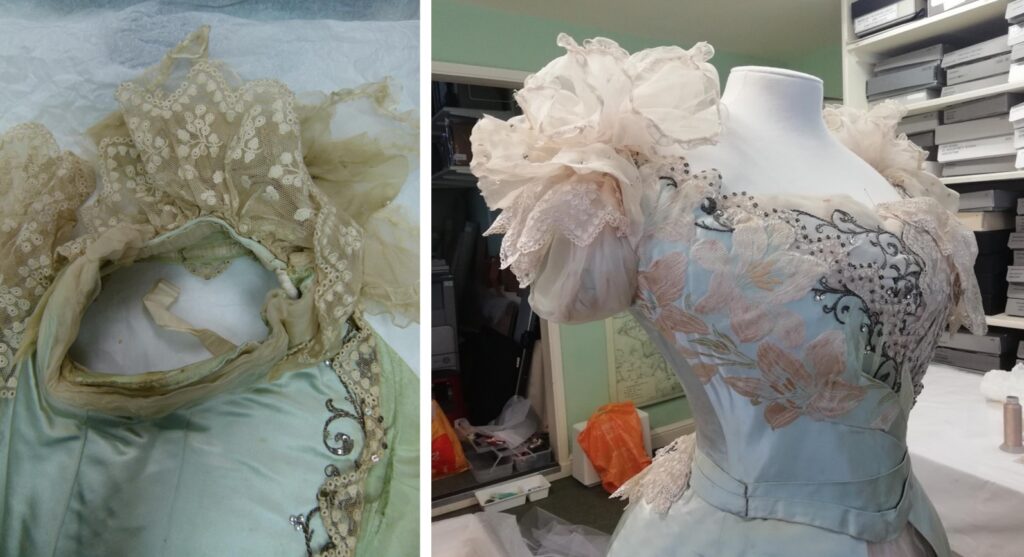
Left: shattered silk underarm before conservation, right: underarm overlaid with new silk crepeline
Following a few final flourishes, the bodice and skit were ready for mounting. This I undertook together with the very excellent Jane Forrest, costume mounter at Chertsey who made all of the beautiful underpinnings. I fitted the torso as part of the treatment as this went hand in hand with the conservation; cutting down a studio mannequin, lengthening the waist and building up a new profile with layers of polyester wadding covered in cotton jersey. This is when you really have to think about the historic profile, in combination with the fragility of the garment and the visual effect that you want to create. The costume itself was not that small so to create the necessary hourglass the mannequin had to be built out at the back to nip the waist in.
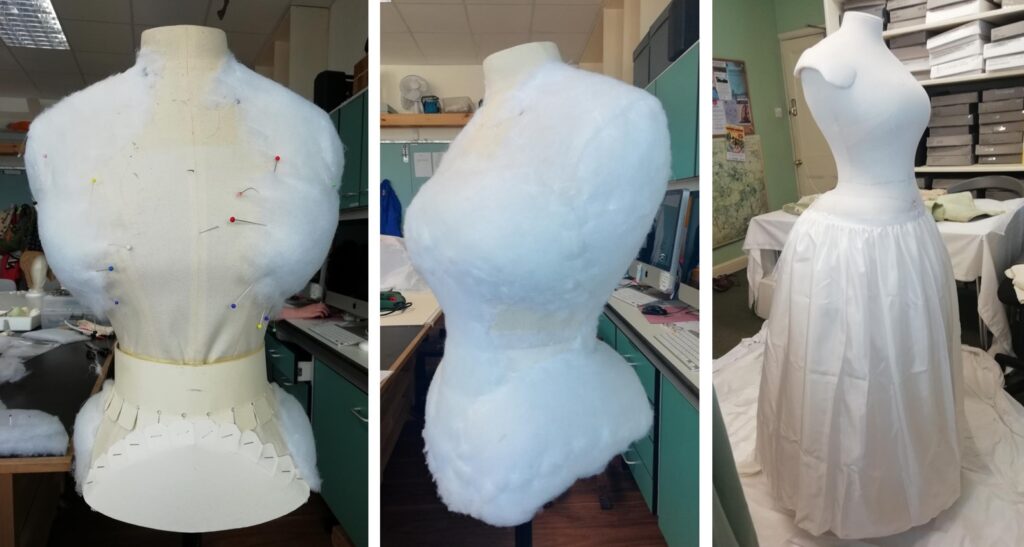
Costume mounting in progress
I fashioned silk covered Fosshape® cups to sit in the underarms and soft pads of net to sit inside the bust. The images below show the supportive silk cups sitting inside the sleeves to hold the shape but also to hide the damaged linings which were netted underneath.
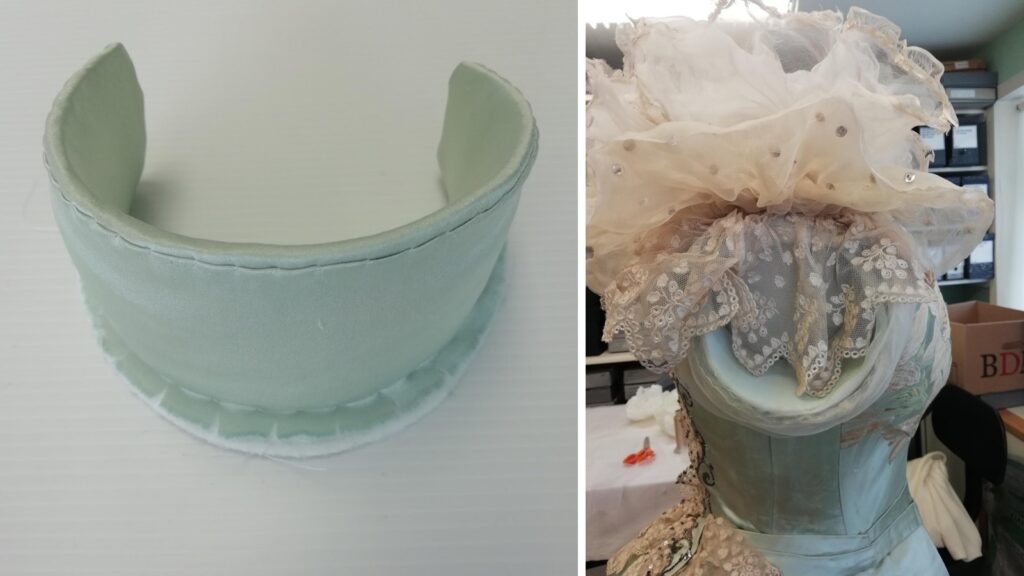
Fosshape® sleeve supports inserted into the underarms
The Chertsey Worth remains one of our most popular Instagrams and we really felt that the public were engaging in the conservation process through our weekly updates. The project encouraged us as a studio to use social media more as a tool to show the complex conservation process and raise awareness of the work that goes into making an ‘au naturel’ aesthetic. A year on, the project was presented at the Association of Dress Historian’s new research conference ‘The Victorian Age: A History of Dress, Textiles and Accessories 1819-1901’, which finally felt like closure. A massive thank you to all my colleagues in Brighton and Grace and Jane at Chertsey for the opportunity to get involved in breathing new life into this iconic garment.
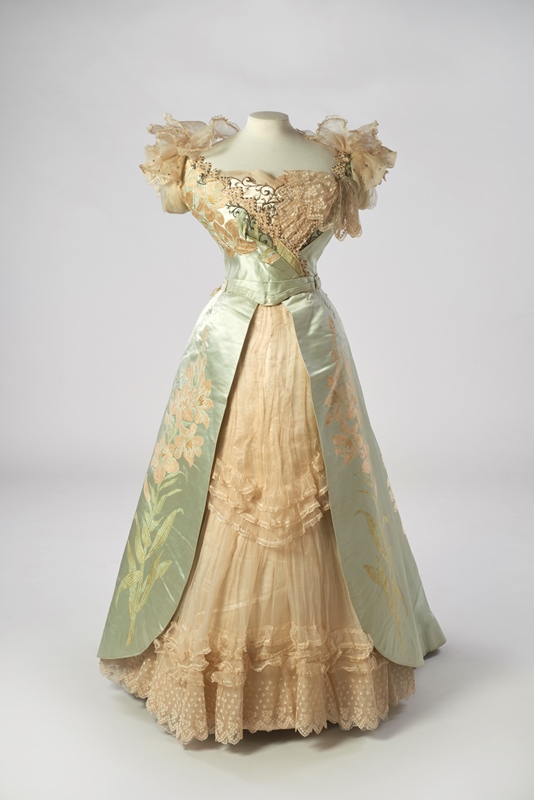
House of Worth gown after conservation, 1897 © The Olive Matthews Collection, Chertsey Museum, Photographed by John Chase Photography, M.2017.013a–c
Watch the Chertsey Museum’s ‘Keeper of Costume’, Grace Evans, taking a detailed look at the ballgown
